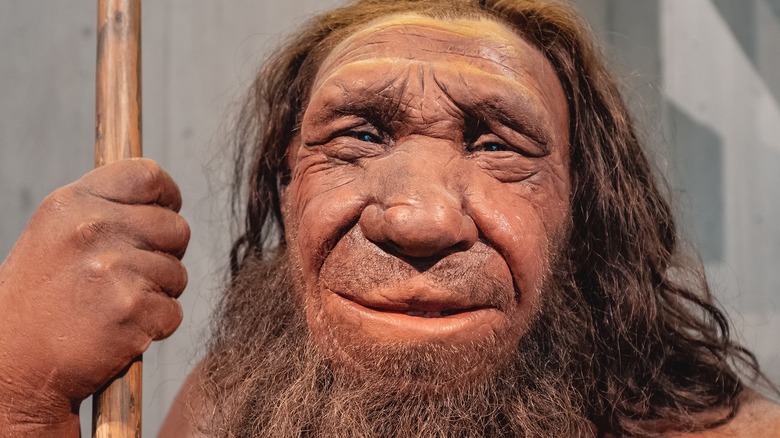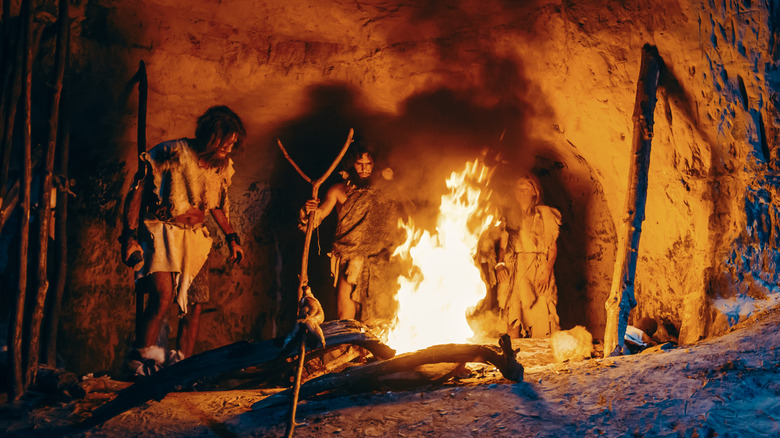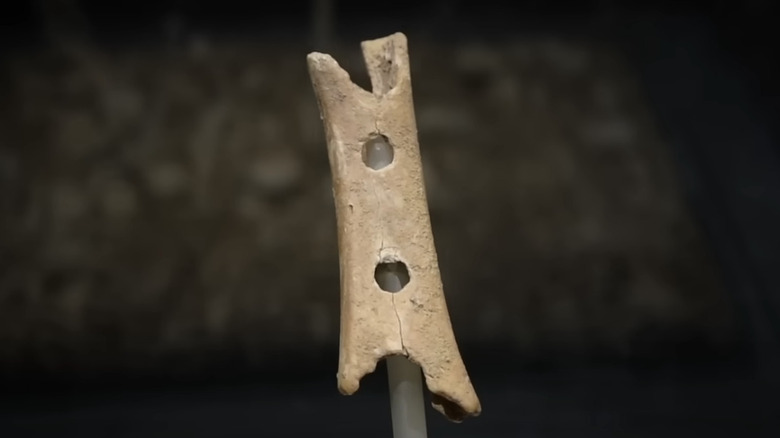The Oldest Instruments Ever Found
Some scholars believe that our ability to create and appreciate music is what makes us human (via mindlab at Northeastern University). Others note that our capacity for music and language are closely linked, according to Psychology Today. Modern humans, or homo sapiens, have been on the Earth for some 300,000 years, per the National Museum of Modern History at the Smithsonian. Alongside modern humans lived other human-related species, all of whom scientists believe died out as recently as 15,000 years ago.
Did any of those other human species make music, such as Neanderthals, or are the abilities to carry a tune and recognize and reproduce rhythm limited to modern homo sapiens? In 1995, a Neanderthal artifact, an instrument, was discovered in modern-day Slovenia that suggests that's likely not the case; melodies have been around a lot longer than we once believed, and modern homo sapiens aren't the only human species to produce them.
A Neanderthal flute was uncovered
The Neanderthal instrument, a bone flute, was found in the Divje babe cave in Slovenia, where many other Paleolithic items have been discovered, including tools that could have been used to make the instrument. The flute was found near a Neanderthal hearth it was made from the thigh bone of a young cave bear, according to The National Museum of Slovenia (NMS) website. The size and positioning of the holes strongly suggest that they were made on purpose, and that purpose was to make music.
The discovery of the Divje babe cave flute puts the earliest example of an instrument found some 20,000 years earlier than once believed. It's also the only example known of an instrument made by a pre-modern human. As the NMS also points out, the flute says as much about the technical skill of Neanderthals as it does about who they were — for lack of a better word — as people: Neanderthals were inclined to make and communicate through music, a telling trait they seemingly shared with modern humans.
The flute was made 50,000 to 60,000 years ago
Prior to the discovery of the Divje babe cave Neanderthal flute made of bear bone, the oldest known instruments, also flutes, were made from bird and mammoth bone by homo sapiens, according to the BBC. They were found in Germany and made about 40,000 years ago. The Divje Babe cave Neanderthal flute was made some 20,000 earlier. In addition to the size and shape of the finger holes on the flute, there seems to be a sharpened mouthpiece of sorts on one end, as the NMS points out. The flute is only about five inches long, and as Classic FM explains, the finger holes on the flute produce different pitches that closely match tones on our modern scale.
The flute also seems to be made for a right-handed player, and all combined, that strongly suggests that the instrument was made intentionally and that its size, shape, and design did not serve some other purpose. A 2015 study, however, published by Royal Society Publishing posits that the object was not an instrument at all but was made instead by a scavenging hyena. Yet listening to a replica of the Divje babe cave flute played by Ljuben Dimkaroski via YouTube makes a compelling case for the idea that Neanderthals created instruments and played music.


